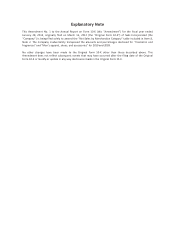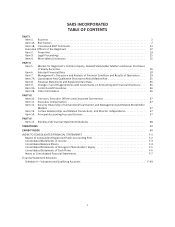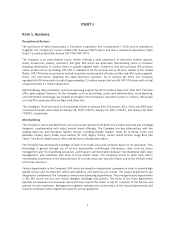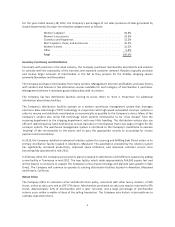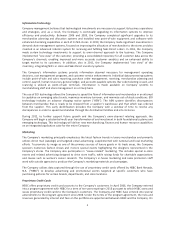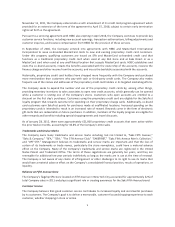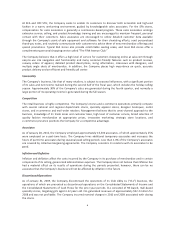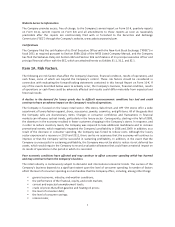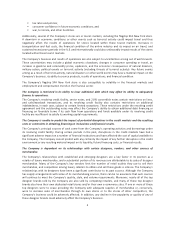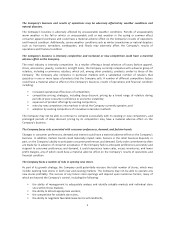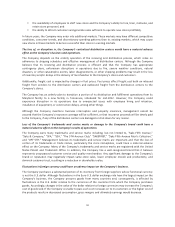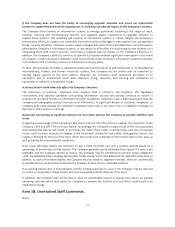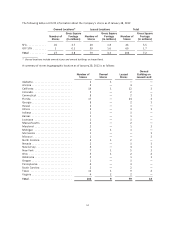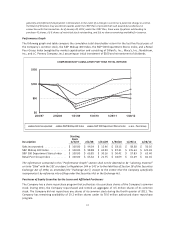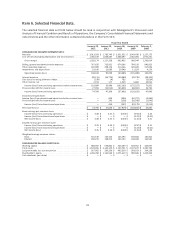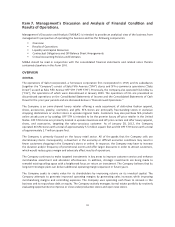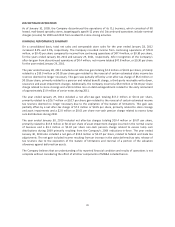Saks Fifth Avenue 2011 Annual Report Download - page 12
Download and view the complete annual report
Please find page 12 of the 2011 Saks Fifth Avenue annual report below. You can navigate through the pages in the report by either clicking on the pages listed below, or by using the keyword search tool below to find specific information within the annual report.▪the availability of employees to staff new stores and the Company’s ability to hire, train, motivate, and
retain store personnel; and
▪the ability to attract customers and generate sales sufficient to operate new stores profitably.
In future years, the Company may enter into additional markets. These markets may have different competitive
conditions, consumer trends, and discretionary spending patterns than its existing markets, which may cause
new stores in these markets to be less successful than stores in existing markets.
The loss of, or disruption in, the Company’s centralized distribution centers would have a material adverse
effect on the Company’s business and operations.
The Company depends on the orderly operation of the receiving and distribution process, which relies on
adherence to shipping schedules and effective management of distribution centers. Although the Company
believes that its receiving and distribution process is efficient and that the Company has appropriate
contingency plans, unforeseen disruptions in operations due to fire, severe weather conditions, natural
disasters, or other catastrophic events, labor disagreements, or other shipping problems may result in the loss
of inventory and/or delays in the delivery of merchandise to the Company’s stores and customers.
Additionally, freight cost is impacted by changes in fuel prices. Fuel prices affect freight cost both on inbound
freight from vendors to the distribution centers and outbound freight from the distribution centers to the
Company’s stores.
The Company has an orderly plan to transition a portion of its distribution and fulfillment operations from its
Maryland facility to a new facility in Tennessee, scheduled for mid-2012. However, the Company could
experience disruption in its operations due to unexpected issues with employee hiring and retention,
installation of equipment, or construction delays, among other things.
Although the Company maintains business interruption and property insurance, management cannot be
assured that the Company’s insurance coverage will be sufficient, or that insurance proceeds will be timely paid
to the Company, if any of the distribution centers are damaged or shut down for any reason.
Loss of the Company’s trademarks and service marks or damage to the Company’s brand could have a
material adverse effect on the Company’s results of operations.
The Company owns many trademarks and service marks including, but not limited to, “Saks Fifth Avenue,”
“Saks & Company,” “SFA,” “S5A,” “The 5TH Avenue Club,” “SAKSFIRST,” “Saks Fifth Avenue Men’s Collection,”
and “OFF 5TH.” Management believes its trademarks and service marks are important and that the loss of
certain of its trademarks or trade names, particularly the store nameplates, could have a material adverse
effect on the Company. Many of the Company’s trademarks and service marks are registered with the United
States Patent and Trademark Office. In addition, the Company has a well-recognized brand that it believes
represents unsurpassed customer service and quality merchandise. Any significant damage to the Company’s
brand or reputation may negatively impact same-store sales, lower employee morale and productivity, and
diminish customer trust, resulting in a reduction in shareholder value.
Fluctuations in foreign currency could have an adverse impact on the Company’s business.
The Company purchases a substantial portion of its inventory from foreign suppliers whose functional currency
is not the U.S. dollar. Although fluctuations in the Euro-U.S. dollar exchange rate have the largest impact on the
Company’s business, the Company procures goods from many countries and, consequently, is affected by
fluctuations in the U.S. dollar relative to the currencies of the countries from which the Company purchases
goods. Accordingly, changes in the value of the dollar relative to foreign currencies may increase the Company’s
cost of goods sold. If the Company is unable to pass such cost increases on to its customers or the higher cost of
the products results in decreased consumption, gross margins and ultimately earnings would decrease.
10


